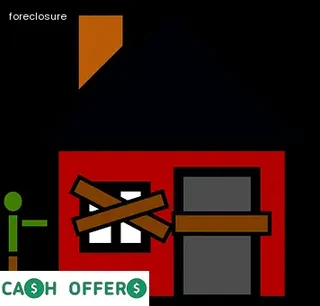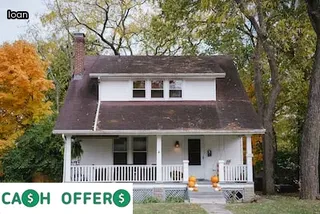When it comes to understanding the foreclosure process in Ohio, there are several important points to consider. The length of time a foreclosure takes in Ohio can vary depending on certain factors such as the type of foreclosure, the lender's policies and procedures, and whether or not the borrower is actively working with the lender or is contesting the foreclosure.
Generally, a judicial foreclosure proceeding in Ohio typically takes between 6 and 12 months from start to finish; however, some circumstances may extend this timeline. Non-judicial foreclosures are generally faster because they do not involve court proceedings.
In addition, lenders may choose to pursue an expedited sale if it is beneficial for them. Furthermore, lenders may offer borrowers options such as loan modifications or repayment plans that could prevent a foreclosure altogether or delay it until a later date.
Understanding these components of the foreclosure process can help ensure a smooth transaction for all parties involved.

When facing the possibility of foreclosure, homeowners in Ohio have several options available to them for avoiding it. It is important to understand the preforeclosure process, as this may be an opportunity for borrowers to make a payment plan or negotiate with their lender.
Homeowners can also request a loan modification in order to reduce their monthly payments and avoid foreclosure. Other potential solutions include refinancing, selling the property, or submitting a deed-in-lieu of foreclosure agreement.
However, it is important to remember that there are no guarantees when attempting to avoid foreclosure. Working closely with the lender and taking proactive steps will give homeowners their best chance of success.
When considering filing for bankruptcy to stop foreclosure in Ohio, it is important to understand the timeline of the foreclosure process and what needs to be done prior to filing. The first step is usually a Notice of Default from the bank, which can take anywhere from 45 days to 90 days depending on the lender.
After this, a Notice of Sale will be issued which typically requires another 30-45 days for completion. It is also important to remember that when filing for bankruptcy, the homeowner must continue to pay their mortgage payments or else they may still be at risk of losing their home.
Additionally, while there are certain laws that could delay or even stop a foreclosure proceeding in Ohio, there are no guarantees and it is always best to consult with an experienced attorney before making any decisions. Finally, homeowners should also consider how long it takes for a bankruptcy case to be processed and discharged so they can plan accordingly.

Though a foreclosure can be an effective way for lenders to reclaim their property and recoup losses, it is not the only option available. Homeowners facing foreclosure in Ohio may wish to explore alternatives that can prevent them from losing their home or damaging their credit score.
These include forbearance agreements, loan modifications, deed-in-lieu of foreclosure, and repayment plans. Forbearance agreements allow lenders to temporarily reduce or suspend payments while the borrower gets back on their feet financially.
Loan modifications involve changing the terms of your mortgage so that you can afford to make payments again. Deed-in-lieu of foreclosure involves giving up ownership of the home in exchange for debt forgiveness.
And repayment plans allow homeowners to catch up on missed payments over time without having to go through the foreclosure process. Each of these options should be considered carefully before making any decisions as they all have pros and cons that must be weighed when deciding which is best for a particular situation.
Homeowners facing foreclosure in Ohio may feel overwhelmed by the process and timeline, but there are ways to protect their rights during this difficult time. First, it is important to contact a HUD-approved housing counselor who can provide information on the various steps involved in the foreclosure process as well as other options that may be available.
In addition, homeowners should review all documents from the lender carefully and seek legal advice if needed. They should also keep records of all communication with their lender and attend any court hearings or mediation sessions related to the foreclosure.
If a homeowner has received a Notice of Default or Notice of Sale, they have the right to request a reinstatement quote which outlines how much must be paid in order to stop the foreclosure process. Homeowners can also ask for an "in-house" loan modification which may offer more favorable terms than those initially presented by the lender.
Finally, it is critical that homeowners remain informed throughout the foreclosure process so they know their rights and understand any changes that could impact their situation.

When it comes to foreclosure proceedings in the state of Ohio, an understanding of deficiency judgment laws is essential. A deficiency judgment occurs when the proceeds from a foreclosure sale are not enough to satisfy the full amount owed on a loan.
This means that after the property has been sold, the lender may still pursue the borrower for any remaining debt by filing a lawsuit and obtaining a deficiency judgment. In Ohio, there are certain restrictions that lenders must adhere to when attempting to obtain a deficiency judgment.
Generally speaking, they must file suit within one year of completing the foreclosure process and they must notify borrowers of their intent to sue at least 90 days prior to filing suit. The court will then determine whether or not the borrower has sufficient assets to cover any remaining debt associated with the loan and if so, enter a deficiency judgment against them.
Knowing these details can help borrowers make informed decisions about their options when facing foreclosure in Ohio.
Ohio foreclosures can be a complicated process that typically involves four distinct steps. The first step is known as the ‘pre-foreclosure’ stage, where lenders will attempt to reach an agreement with borrowers on a repayment plan or loan modification.
If no agreement can be reached, the lender then files a foreclosure complaint with the court to begin the foreclosure proceedings. Next comes the ‘sale’ stage, where properties are put up for auction and buyers bid on them.
If there are no bids, the property then becomes ‘real estate owned’ (REO), and is held by the lender until it is sold. Finally, after all of this has been completed, the lender will file a final decree of foreclosure to end their rights to the property and transfer ownership to a new buyer.
It is important for potential buyers in Ohio to understand these steps in order to make informed decisions about whether or not they wish to purchase a foreclosed home.

Navigating the preforeclosure period in Ohio can be a daunting process. It's important to understand the timeline and process for foreclosure so you can take the necessary steps to protect your rights as a homeowner.
The first step is to determine how long foreclosure typically takes in Ohio. In most cases, it will take anywhere from four months to over two years from start to finish.
During this time, homeowners may receive several notices of default, including a Notice of Mortgage Default and an opportunity to cure the default. It's important to act quickly when you receive these notices, because if you don't respond within 30 days of receiving them, your mortgage lender may begin the foreclosure process without further notice.
Additionally, once the foreclosure process has begun, it's important to contact a qualified attorney or housing counselor who can help you understand your options and provide guidance on what steps you should take next.
When facing foreclosure in Ohio, it is important to understand the process and timeline associated with the foreclosure so you can develop strategies for avoiding a sale of your home through preforeclosure. It is possible to negotiate a payment agreement with the lender or explore other options such as loan modification or short sale.
Working with a qualified housing counselor or lawyer can help homeowners navigate their options and find an appropriate solution for their unique situation. In addition, researching state and local laws can provide insight into how long the foreclosure process may take in Ohio and what rights are granted to homeowners during this time.
Taking action early can give homeowners more control over the outcome, allowing them to protect their assets and avoid a sale of their home through preforeclosure.

Although it is a difficult process, challenging an unfair foreclosure attempt in Ohio is possible. The homeowner should make sure to research the law and understand the legal proceedings involved before going forward with any action.
It is important to remember that the homeowner will need to provide valid evidence of their claim in order for the court to consider the challenge. Gathering evidence may include obtaining documents from the lender, such as loan statements or contracts, as well as records of any communications between both parties.
Additionally, homeowners may also want to consult legal counsel who can help guide them through this process and advise on how best to move forward. Ultimately, if all necessary documents are provided and a case is made that the foreclosure is indeed an unfair attempt by the lender, then there is a chance of successfully overturning it.
The foreclosure process in Ohio is time-intensive and complex, so enlisting the help of an attorney can make a substantial difference in the timeline. Without an attorney, homeowners will have to navigate the legal proceedings and paperwork by themselves.
This requires more time as homeowners have to attend court hearings, draft motions and respond to lenders’ actions. With an experienced attorney, they can take advantage of their expertise in foreclosure law and gain access to their knowledge of court proceedings.
This results in a shorter timeline as all the paperwork is drafted correctly from the start, which saves time throughout the process. Furthermore, attorneys are better able to negotiate with lenders for more favorable outcomes and can quickly respond to lender filings since they are familiar with all applicable foreclosure laws.
Additionally, having an attorney increases the chances that a homeowner’s rights will be protected during the entire process. Ultimately, getting legal assistance ensures that homeowners understand their rights and obligations throughout this complicated process.

When considering moving out during a foreclosure, it is important to ask yourself the right questions in order to make the best decision for you and your family.
How long does a foreclosure take in Ohio? What are the different stages of the process? What are the financial and legal implications of a foreclosure? Is there any way to delay or stop the process once it has begun? These are all important questions that need to be addressed before making any decisions as they can have significant impacts on your future.
It is also essential to understand what rights you may have as a tenant and how long you can stay in your home after the notice has been issued.
Knowing how long a foreclosure takes in Ohio, as well as other details about the process and timeline, can help you make an informed decision about whether or not it is best for you to move out during this difficult time.
Using a professional to help with a foreclosure process in Ohio can be beneficial, as they are experienced in navigating the system and can provide support throughout the entire process. However, there are also drawbacks to involving someone outside of the situation.
Professionals may not be familiar with all the details of an individual's foreclosure process, such as specific state laws or unique circumstances. Additionally, using a third party can be expensive, especially if they are charging a flat fee or hourly rate for their services.
Although having a professional involved can make things easier in some ways, it is important to weigh the pros and cons before deciding whether or not to use one during your foreclosure proceedings.
In Ohio, the foreclosure process begins when a lender files a foreclosure complaint in court and serves it to the borrower. The complaint states the amount of debt owed and other conditions that may be required to reinstate the loan.
The borrower then has 28 days to respond to the complaint or else they risk a default judgment against them. If the borrower responds, they will have their day in court where they will have an opportunity to dispute any claims made by the lender.
If there is no dispute, and the judge rules in favor of the lender, then a foreclosure sale date is set for 90 days later. During this time period, borrowers can still try to work out a repayment plan or find another solution with their lender.
After the sale date passes and if no additional payment arrangements are agreed upon, then title passes from the borrower back to the lender who can now take possession of the property. Depending on how quickly any disputes are resolved and all paperwork is processed, it can take anywhere from four months up to a year for a foreclosure in Ohio to be completed.

When a property is foreclosed on in Ohio, the homeowner must move out of the property as soon as possible.
The timeline for when a homeowner must move out after foreclosure depends on whether the lender uses an expedited or judicial foreclosure process.
In an expedited foreclosure, the homeowner must move out within 30 days after the sheriff’s sale, while in a judicial foreclosure, the homeowner has up to six months to vacate.
In either case, it’s important for homeowners to be aware of their rights and responsibilities under Ohio law when facing foreclosure.
Once a foreclosure is complete in Ohio, the home is sold at an auction. The proceeds of the sale will be used to pay off any outstanding mortgage debt, as well as other costs associated with the foreclosure process.
If there is money left over after all debts are paid, the homeowner may be entitled to receive it. After the sale is finalized, the new owner must take possession of the property.
The former homeowner no longer has a legal right to remain on the property and must vacate within a certain period of time. In some cases, local law enforcement may need to step in if necessary to ensure that this happens.
Once vacated, a bank or other financial institution will typically take ownership and manage the property until it can be sold again.
Falling behind on mortgage payments is a difficult situation to be in, and it can lead to foreclosure. But how many months behind must you be before foreclosure begins in Ohio? Generally, homeowners who are more than four months behind on their mortgage payments will be at risk of foreclosure.
This timeline can vary depending on the lender and the type of loan. If a homeowner receives an official notice from their lender that they are in default, they may have as little as 30 days to catch up on their payments or negotiate a repayment plan before the lender moves forward with foreclosure proceedings.
It's important for homeowners to be aware of how long they have until foreclosure begins so that they can take action if necessary.